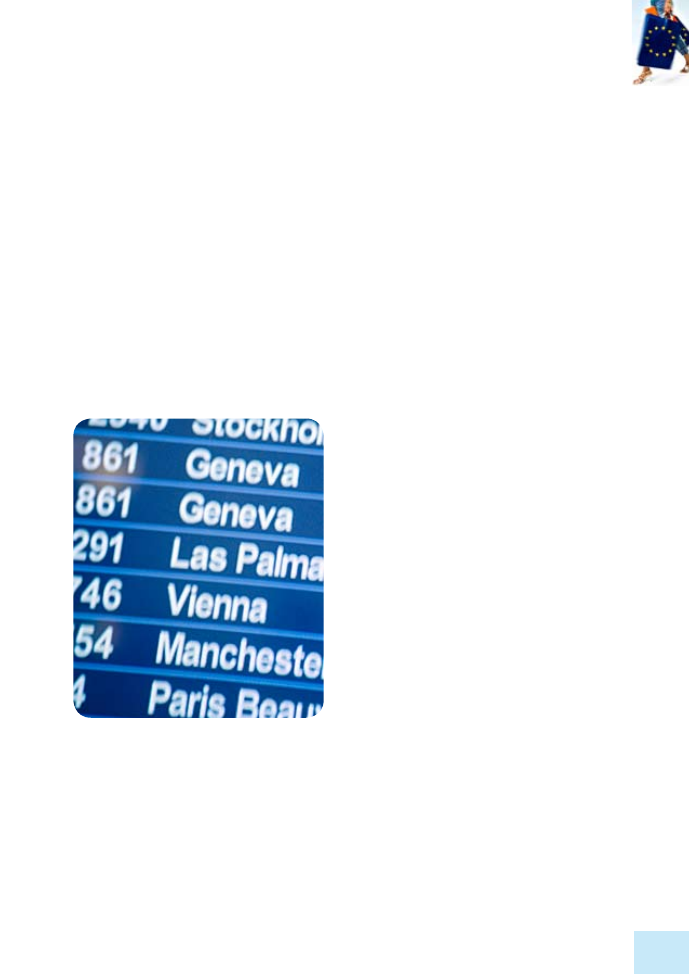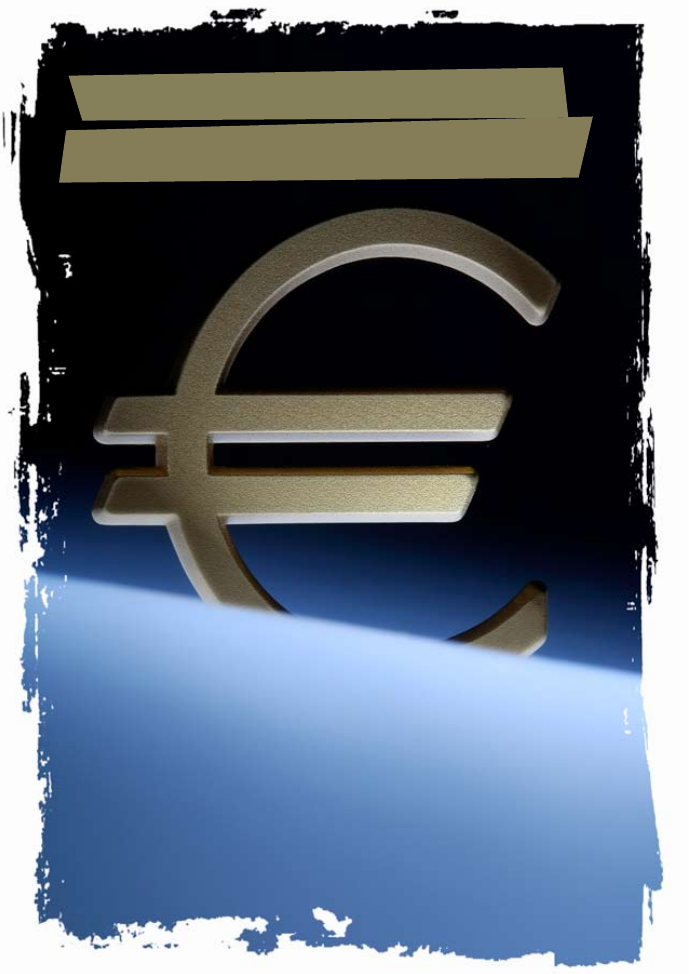ВУЗ: Не указан
Категория: Не указан
Дисциплина: Не указана
Добавлен: 07.04.2021
Просмотров: 627
Скачиваний: 1
29
29
Europe in 12 lessons
I. Achieving the 1993 objective
a. The limits of the common market
The 9 Treaty establishing the European
Economic Community made it possible to
abolish customs barriers within the Com-
munity and establish a common customs
tariff to be applied to goods from non-
EEC countries. This objective was achieved
on July 98.
However, customs duties are only one as-
pect of protectionist barriers to cross-border
trade. In the 90s, other trade barriers
hampered the complete achievement of the
common market. Technical norms, health
and safety standards, national regulations
on the right to practise certain professions
and exchange controls all restricted the free
movement of people, goods and capital.
b. The 1993 objective
In June 98, the Commission, under its
then President, Jacques Delors, published a
White Paper seeking to abolish, within seven
years, all physical, technical and tax-related
barriers to free movement within the Com-
munity. The aim was to stimulate industrial
and commercial expansion within a large,
unified economic area on a scale with the
American market.
The enabling instrument for the single mar-
ket was the Single European Act, which
came into force in July 98. Its provisions
included:
• extending the powers of the Community
in some policy areas (social policy, research,
environment);
• gradually establishing the single mar-
ket over a period up to the end of 992,
by means of a vast legislative programme
involving the adoption of hundreds of direc-
tives and regulations;
• making more frequent use of majority
voting in the Council of Ministers.
II. How the single market
looks today
a. Physical barriers
All border controls within the EU on goods
have been abolished, together with customs
controls on people. Random spot checks by
police (part of the fight against crime and
drugs) still take place when necessary.
• The single market is one of the European Union’s greatest
achievements. Restrictions between member countries on trade
and free competition have gradually been eliminated,
with the result that standards of living have increased.
• The single market has not yet become a single economic area.
Some sectors of the economy (public services) are still subject
to national laws.
• The individual EU countries still largely have the responsibility
for taxation and social welfare.
• The single market is supported by a number of related policies put
in place by the EU over the years. They help ensure that market liberalisa-
tion benefits as many businesses and consumers as possible.
0
0
The Schengen Agreement, which was signed
by a first group of EU countries in 98
and later extended to others (although Ire-
land and the United Kingdom do not par-
ticipate), governs police cooperation and a
common asylum and immigration policy, so
as to make it possible to completely abolish
checks on persons at the EU’s internal bor-
ders (see Lesson 0: ‘Freedom, security and
justice’). The countries which have joined
since 2004 are gradually coming into line
with the rules of the Schengen area.
b. Technical barriers
For the majority of products, EU countries
have adopted the principle of mutual recog-
nition of national rules. Any product legally
manufactured and sold in one member state
must be allowed to be placed on the market
in all others.
It has been possible to liberalise the serv-
ices sector thanks to mutual recognition or
coordination of national rules concerning
access to or practice of certain professions
(law, medicine, tourism, banking, insurance,
etc.). Nevertheless, freedom of movement
for persons is far from complete. Obstacles
still hinder people from moving to another
EU country or doing certain types of work
there.
Action has been taken to improve worker
mobility, and particularly to ensure that
educational diplomas and job qualifications
(for plumbers, carpenters, etc.) obtained
in one EU country are recognised in all
the others.
The opening of national services markets
has brought down the price of national tel-
ephone calls to a fraction of what they were
0 years ago. Helped by new technology,
the internet is being increasingly used for
telephone calls. Competitive pressure has
led to significant falls in the price of budget
airfares in Europe.
c. Tax barriers
Tax barriers have been reduced through the
partial alignment of national VAT rates. Tax-
ation of investment income was the subject
of an agreement between the member states
and some other countries (including Switzer-
land) which came into force in July 200.
d. Public contracts
Regardless of whether they are awarded by
national, regional or local authorities, pub-
lic contracts are now open to bidders from
anywhere in the EU as a result of directives
covering services, supplies and works in
many sectors, including water, energy and
telecommunications.
III. Work in progress
a. Financial services
The EU’s action plan to create an integrated
market for financial services by 200 has
been completed. This cuts the cost of bor-
rowing for businesses and consumers, and
will offer savers a wider range of invest-
ment products — savings plans and pension
schemes — which they will be able to obtain
from the European provider of their choice.
Bank charges for cross-border payments
have been reduced.
b. Administrative and technical
barriers to free movement
EU countries are often still reluctant to ac-
cept each other’s standards and norms or,
on occasion, to recognise the equivalence of
professional qualifications. The fragmented
nature of national tax systems also hinders
market integration and efficiency.
c. Piracy and counterfeiting
Protection is required to prevent piracy and
counterfeiting of EU products. The European
Commission estimates that these crimes cost
the EU thousands of jobs each year. This is
why the Commission and national govern-
ments are working on extending copyright
and patent protection.
IV. Policies underpinning
the single market
a. Transport
The EU’s activities have targeted mainly the
freedom to provide services in land transport,
particularly free access to the international

Europe in 12 lessons
transport market and the admission of non-
resident transport firms into the national
transport market of member countries. Deci-
sions have been taken to harmonise the con-
ditions of competition in the road transport
sector, particularly worker qualifications and
market access, the freedom to establish a
business and provide services, driving times
and road safety.
The common air transport policy has to re-
spond to the effects of worldwide competi-
tion. The skies over Europe are being liber-
alised in stages, with the result that there is
greater scope for capacity-sharing between
major airlines, reciprocal market access and
the freedom to set fares. This goes hand in
hand with safeguard clauses so as to take
account of airlines’ public service responsi-
bilities and zoning requirements.
Shipping — whether carried out by European
companies or by vessels flying the flag of
non-EU countries — is subject to EU com-
petition rules. These rules are intended to
combat unfair pricing practices (flags of
convenience) and also to address the seri-
ous difficulties facing the shipbuilding in-
dustry in Europe.
b. Competition
The EU’s robust competition policy dates
from the Treaty of Rome. It is the vital cor-
ollary to the rules on free trade within the
European single market. This policy is im-
plemented by the European Commission
which, together with the Court of Justice, is
responsible for ensuring that it is respected.
The reason for this policy is to prevent any
agreement between businesses, any aid
from public authorities or any unfair monop-
oly from distorting free competition within
the single market.
Any agreement falling under the Treaty rules
must be notified to the European Commis-
sion by the companies or bodies concerned.
The Commission may impose a fine directly
on any companies which break its competi-
tion rules or fail to make the required noti-
fication.
In the event of illegal public aid, or failure
to notify such aid, the Commission may de-
mand that it be paid back by the recipient.
Any merger or takeover that could lead to
a company having a dominant position in
a particular sector must be notified to the
Commission.
c. Consumer policy
The EU’s consumer policy permits its citizens
to shop in confidence in any member coun-
try. All consumers benefit from the same
high level of protection. The products you
buy and the food you eat are tested and
checked to make sure they are as safe as
can be. The EU acts to make sure you are
not cheated by rogue traders and are not
the victim of false or misleading advertis-
ing. Your rights are protected and you have
access to redress wherever you are in the
EU and whether you buy your goods in
a shop, by mail-order or via the telephone
and internet.
Increased competition has driven airfares down
and made travel easier.
© Strauss/Curtis/Van Parys Media

2
2
7. Economic and monetary
union (EMU) and the euro
Europe in 12 lessons
I. The history of monetary
cooperation
a. The European monetary
system (EMS)
In 9, the United States decided to abol-
ish the fixed link between the dollar and the
official price of gold, which had ensured glo-
bal monetary stability after World War Two.
This put an end to the system of fixed ex-
change rates. With a view to setting up their
own monetary union, EU countries decided
to prevent exchange fluctuations of more
than 2.2% between the European curren-
cies by means of concerted intervention on
currency markets.
This led to the creation of the European
monetary system (EMS) which came into
operation in March 99. It had three main
features:
• a reference currency called the ecu: this
was a ‘basket’ made up of the currencies of
all the member states;
• an exchange rate mechanism: each
currency had an exchange rate linked to the
ecu; bilateral exchange rates were allowed
to fluctuate within a band of 2.2%;
• a credit mechanism: each country trans-
ferred 20% of its currency and gold reserves
to a joint fund.
b. From the EMS to EMU
The EMS had a chequered history. Following
the reunification of Germany and renewed
currency pressures within Europe, the Ital-
ian lira and pound sterling left the EMS in
992. In August 99, the EMS countries
decided to temporarily widen the bands to
%. Meanwhile, to prevent wide currency
fluctuations among EU currencies and to
eliminate competitive devaluations, EU gov-
ernments had decided to relaunch the drive
to full monetary union and to introduce a
single currency.
At the European Council in Madrid in June
989, EU leaders adopted a three-stage
plan for economic and monetary union. This
plan became part of the Maastricht Treaty
on European Union adopted by the Euro-
pean Council in December 99.
II. Economic and Monetary
Union (EMU)
a. The three stages
The
first stage
, which began on July
990, involved:
• completely free movement of capi-
tal within the EU (abolition of exchange
controls);
• increasing the amount of resources
devoted to removing inequalities between
European regions (structural funds);
• The euro is the single currency of the European Union. Twelve of the then
15 countries adopted it for non-cash transactions from 1999 and for all
payments in 2002 when euro notes and coins were issued.
• Three countries (Denmark, Sweden and the United Kingdom) did not
participate in this monetary union.
• The new member countries are getting ready to enter the euro area as
soon as they fulfil the necessary criteria.
• In parallel with the objective of monetary stability, which is the responsi-
bility of the European Central Bank, the member states are committed to
higher growth and economic convergence.